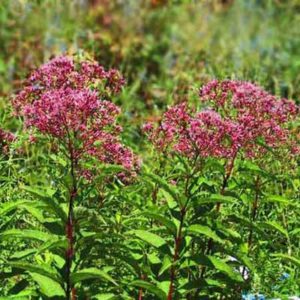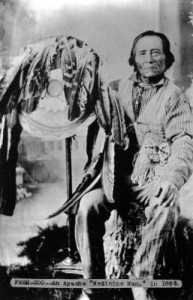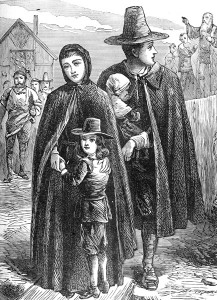Europeans who came to the New World welcomed Native American medical knowledge. Though Europeans had commonly used herbs and other plant preparations to cure illnesses, they were not familiar with many of the plants they found in their new home. Native Americans had used these plants for centuries and generously shared their knowledge. Joe Pye weed (which can be dangerous if used without caution) is a native plant with many medicinal uses. The Iroquois and Cherokee used its roots and flowers as a diuretic to help with urinary and kidney ailments, while the roots and leaves could be steeped in hot water and the liquid taken for fever and inflammation.
This weed’s unusual name has been attributed to a number of sources. One is that Joe Pye was a phonetic translation of jopi or jopai, supposedly an early native American word for typhus. Or, it derived from the name of a 19th century white “Indian theme promoter.” However, the 1822 third edition of the Manual of Botany, for the Northern and Middle States of America states that Joe Pye weed was named after a Native American in Massachusetts. Details of Pye’s life have not always been recounted accurately, but according to research by Richard Pearce, Pye was a Mohegan sachem (healer) who lived in an area where the weed (botanical name: Eutrochium purpureum) was used to cure an outbreak of typhus. Joe Pye weed is a sweat inducer, which is probably the mechanism of cure.
______________________________________________________________________________________


